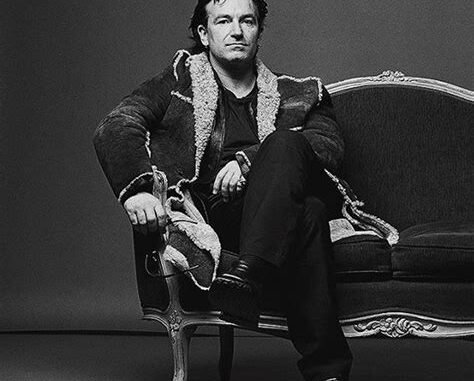
Certainly! Here’s a 600-word explanation or reflection on the scene from the Netflix movie featuring Bono:
—
In this poignant scene from the Netflix documentary, Bono is shown sitting under a solitary spotlight, directly addressing the camera—and by extension, us, the viewers. Instead of the usual stage lights or his signature sunglasses that shield his eyes and add a layer of mystique, he appears open, vulnerable, and honest. This visual choice is powerful because it strips away the glamour and persona often associated with rock stars, revealing the man behind the music.
Bono’s narration is humorous and modest, creating an intimate atmosphere that invites us into his personal world. He recounts his early life with a raw honesty that balances moments of levity with profound emotion. One of the key themes he touches on is the death of his mother at a young age. Losing a parent so early in life is a significant event that can shape a person’s identity and outlook. Bono’s reflection on this tragedy helps us understand the emotional depths that fuel his creative expression and activism. His storytelling conveys not just the facts but also the feelings—grief, confusion, and resilience—that accompanied this loss.
He also shares insights into his tense relationship with his father. This familial dynamic adds another layer to his background, illustrating the complex influences that shaped his character. Bono’s humility in discussing these personal struggles demonstrates his awareness of their impact on his journey. Rather than portraying himself as a hero, he presents himself as someone who faced adversity and grew stronger because of it.
A particularly charming part of his narration is the story of how he met his future bandmates—strange, almost serendipitous friendships that seemed unlikely at the time but would eventually lead to international fame. These anecdotes highlight the importance of timing, chemistry, and perseverance in achieving success. Bono emphasizes that their bond was built on shared dreams, struggles, and a common desire to make music that mattered.
Throughout the scene, Bono’s direct address creates a sense of intimacy, making us feel as though he’s speaking to each of us personally. This technique breaks down the barrier between performer and audience, transforming a simple narration into a heartfelt conversation. It also helps to humanize him, reminding us that behind the iconic persona is a person with fears, hopes, and a story worth telling.
The scene also underscores the theme of humility in the face of success. Bono humorously refers to their rise from humble beginnings, emphasizing that their journey was not predetermined but built through hard work, luck, and a bit of serendipity. His modest tone contrasts with the grandeur of their achievements, reminding us that greatness often stems from humble roots.
From a storytelling perspective, this moment is a masterclass in vulnerability and honesty. It draws viewers in emotionally, giving context to the music and activism for which Bono is known. By sharing personal stories, he invites us to reflect on our own struggles and aspirations, making his narrative relatable and inspiring.
In essence, this scene encapsulates the power of storytelling—how personal stories can connect us across differences, bridge gaps between fans and artists, and humanize even the most iconic figures. Bono’s candid narration under the spotlight exemplifies the idea that true connection comes from honesty, humility, and the willingness to be seen without filters.
In conclusion, this moment from the Netflix movie is more than just a recounting of Bono’s early life; it’s a testament to the importance of vulnerability in storytelling. By sitting under a simple spotlight and speaking directly to us, Bono creates an intimate space where personal history becomes a universal narrative of resilience, friendship, and the pursuit of meaning. It’s a reminder that behind every successful figure is a story worth sharing—one that resonates deeply when told with honesty and humility.
—
Leave a Reply